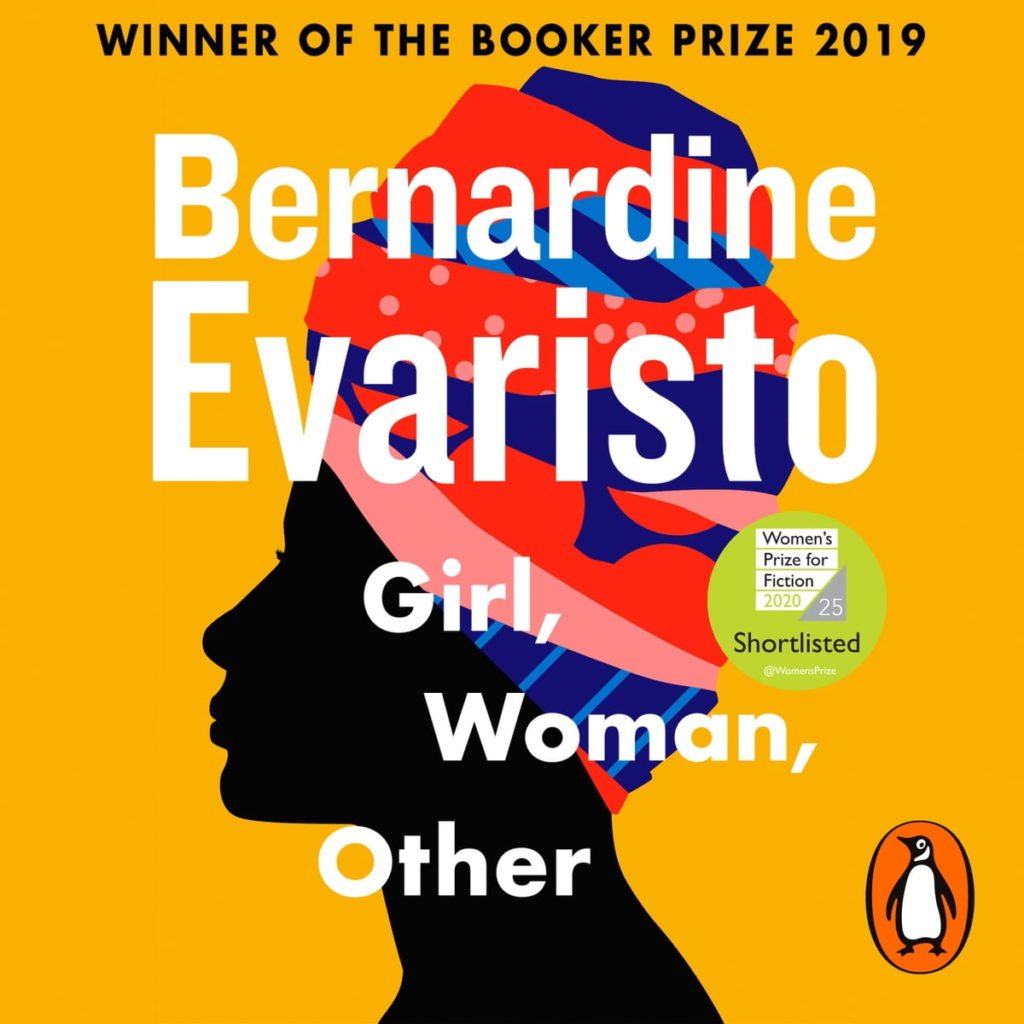Girl, Woman, Other by Bernardine Evaristo
Reviewed by Michael Attard
Can you relate to black radical lesbian feminism? If you can, or even if you cannot, this novel is for you. Discrimination and racism, real and perceived, have affected the lives of millions for generations throughout centuries. The ensuing injustices have been and continue to be particularly hard felt by women of color. The author, Bernardine Evaristo, through her multitude of characters, opens doors and windows for readers, allowing us to experience the full lives of black women with their particular handicaps, struggles, failures, and successes.
Please withhold judgement. The author does not use the story as a platform for a personal rant condemning all white people, especially males. There is no advocacy for racial or gender warfare. Rather, there are stories of human experience and personal encounters told with empathy and humor to which we can all relate.
The book’s opening is provocative. We meet Amma, a true political activist who is black, feminist, lesbian, and proud of it. Amma appears far from downtrodden and in fact has become a successful plawright. But like everyone, Amma has a history. She would do things like pour a pint of beer over the head of a director who produced a play that offended her political sensibilities. Years later, her views do change and she becomes more forgiving. She accepts the fact that, yes, her father “was a patriarch but her mother was right when she said, he is of his time and culture.” Her daughter, Yazz, is a competent and decisive woman, not quick to “accuse people of racism or microaggressions.” And she does not always agree with her mother, saying, “I’m humanitarian, which is on a much higher plane than feminism.”

Much further along the continuum in the opposite direction is Nzinga, a character who sees oppression everywhere. She suggests that her lover’s past relationships with blondes is a “sign of self-loathing, a brainwashing by the white beauty ideal.” She scorned black woman who sounded British. She saw “internalized racism everywhere.” Friendship offered by white women was fake. Books by men should not be read because “one cannot be a true womanist with male voices in your head.” But the author, while presenting these views, does not offer support and, in one exchange over slavery, it is pointed out “that the African man had also sold Africans into slavery, so it was a lot more complex than that.”
There are four chapters in the book divided into twelve sections, each of which is named after a female character. At first, the chapters seem disparate, but as one reads on, the interwovenness of the women’s lives becomes clear. The underlying theme may appear to be of sisterhood, but it goes beyond that to be a statement about our shared humanity. The connectivity of the relationships is also a successful literary ploy for keeping the reader engaged and on guard for the next surprise.
There are male characters in the book, and while they are minor, their presence does help to keep the story real and interesting. Most of them are good men, but there are always a few idiots. Winsome was so thrilled with her successful and handsome son-in-law that he made her swoon. She began to have all kinds of thoughts about him. As long as she kept them in her head, she determined that it was okay. But those thoughts did not remain in her head. “She went to war with her morals … guess which side won? … she deserved to have him.”
Underlying everything is culture. Many references are about the foods which come from their family homeland and have been prepared for generations. The author keeps the story and characters real through these celebratory, everyday meals. We are made aware that these women, now in England, are individuals within a diaspora. Their roots have been scattered across the globe, but their culture has survived. For some of these women, it is a struggle of conscience. Bummi hoped that her daughter Carole would return to her culture, “and even eat with her hands again instead of side-glancing her mama for doing so.” It seemed that Carole’s university degree had “led to the rejection of her true culture.”
The subjects of sexuality and gender are infused throughout the book, and while they are explored through female characters, it is worth noting that the author is writing for both genders and in fact for everyone in between. I think it is fair to say that the author sees sexuality and gender as existing along a spectrum. In other words, just like light refracting into a rainbow of colors, people refract according to their personal wavelength. Thus, there should be no judgements when the widowed Bummi finds herself sexually attracted to a woman at her church. But because of self-assessed shame, Bummi stopped seeing her lover. It is this ingrained cultural gender identity that the author is rejecting.
The character Megan becomes Morgan and embraces a gender-free identity. She is happy with where she is along the spectrum. Yes, she wanted to get rid of her breasts, but she had no desire to, “deepen her voice, grow body hair, and phalloplasty was never on the cards.”
The book is an exploration of how we learn about who we are as opposed to what we have been told about what we are. This is a story of acceptance and growth.
Girl, Woman, Other is Bernardine Evaristo’s eighth novel and the winner of the 2019 Booker Prize.
The Reviewer
Michael Attard is a Canadian who has lived in Gwangju since 2004. Though officially retired, he still teaches a few private English classes. He enjoys reading all kinds of books and writes for fun. When the weather is nice, you may find him on a hiking trail.




